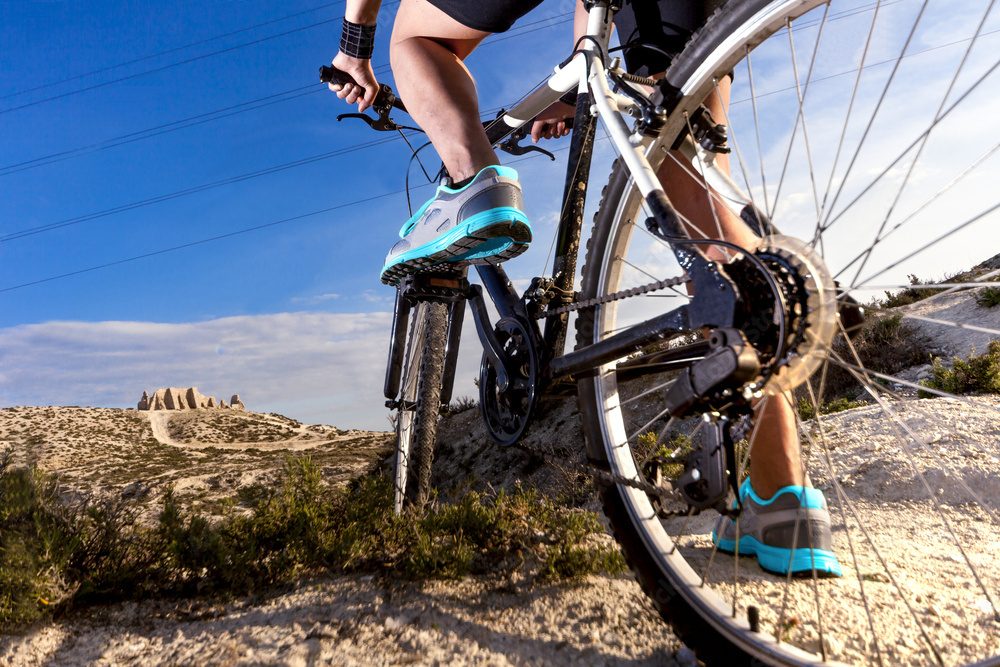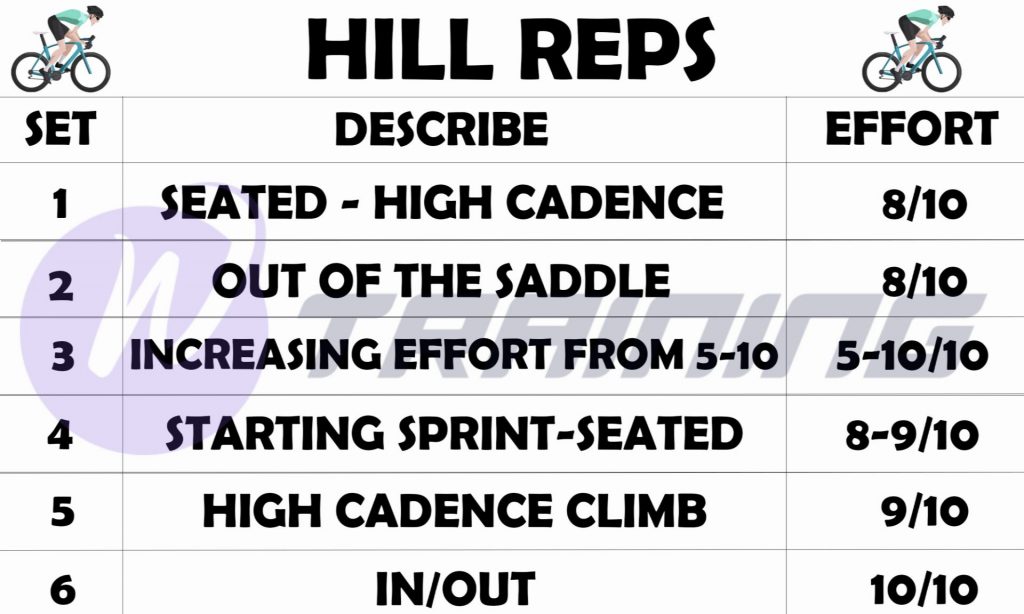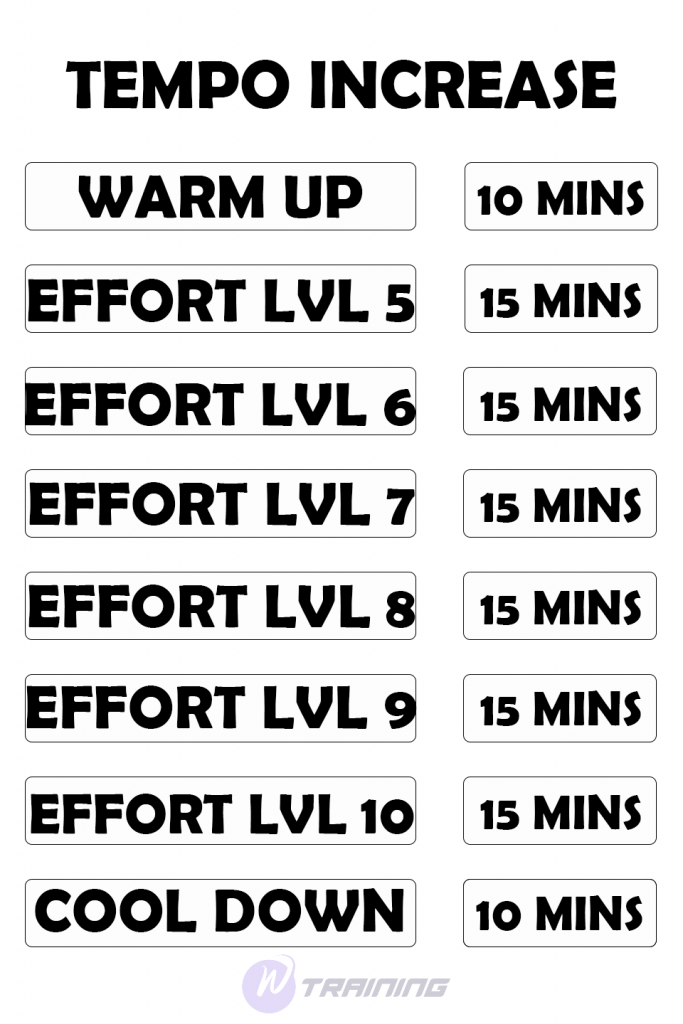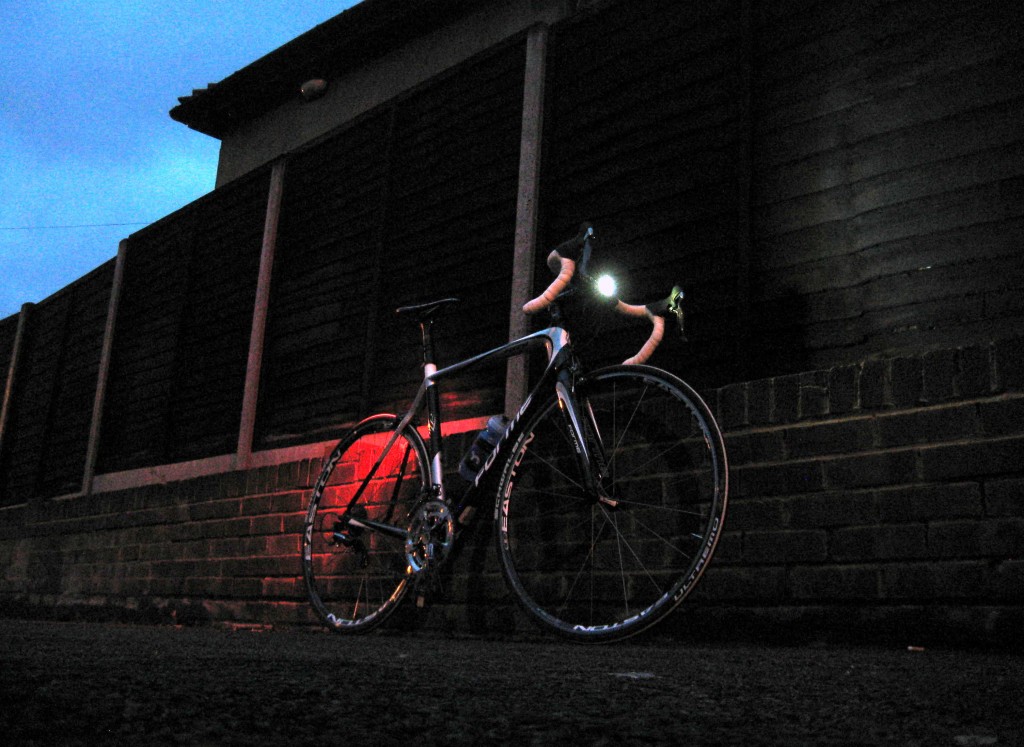Outdoor cycling interval training sessions are a type of bicycle workout. Incorporating focused cycle interval training may be a very efficient strategy for amateur cyclists to build fitness with less training time and enhance performance on solo adventures, group rides, and century rides. Cycling interval training sessions are often misunderstood by cyclists who believe they are just for elite cyclists or dedicated athletes.

Contents
What is cycling interval training?
Cycling interval training is a cycle workout program that alternates between intensive intervals of low and high-intensity cycling; It means that the time spent breaking up a session with high-intensity bursts is followed by rest periods. This framework may be adjusted in terms of volume, frequency, duration, and intensity in order to target the areas that you wish to improve.
Like Elliot Lipski, team coach for professional outfit Team Dimension Data for Qhubeka said: “The ‘intervals’ do not always need to be completed at 100 percent effort. However, it all depends on the aim of the session and how that fits in with your longer-term targets.”
Cycling interval training has 2 main ways: Indoor interval bike training and outdoor cycling intervals. Both of them have pros and cons, but today we will focus on outdoor cycling interval training.
Reasons to engage outdoor cycling interval training
Surprisingly, this outdoor cycling interval training sport offers numerous benefits for your physical health and your emotional health.
1. Physical health:
- Weight loss
Weight reduction without a severe diet is one of the evident benefits of interval exercise. People who convert to cycling shed an average of 7kg over the course of a year while riding for 30 minutes each trip, according to researchers at the University of East Anglia and the Centre for Diet and Activity Research (CIRR) in Norwich, Cumbria.
- Improve heart health
Cycling interval training also helps people improve their heart health. “Aerobic or cardiovascular training is intended to develop a healthier heart and circulatory system,” says Howard Knuttgen, a past president of the American College of Sports Medicine also a research associate in physical medicine and rehabilitation at Harvard-affiliated Spaulding Rehabilitation Hospital.
- Strengthen muscles
This cycling interval training program helps to strengthen muscles. The resistance factor of the cycling interval means that it doesn’t simply burn fat. It also develops muscle around the glutes, hamstrings, quadriceps,… Muscle is leaner than fat, and people who have a larger proportion of muscles burn more calories even when they are inactive.
However, you will acquire a well-toned derriere. Cycling interval training is a low-impact sport, so gentler on your joints than running or fast-walking. You’ll gain strength and a range of muscle groups that will complement your strength and speed. It also helps increase your flexibility and range of motion, which assists in preventing injury.
- Protect immune system
Outdoor cycling interval training and other physical exercises can help your body wash out germs from your lungs and airways, which lowers the chance of a cold or flu taking root. A study of 125 long-distance bikers in their 80s found their immune systems were as good as someone in their 20s.
See also: Cycling HIIT Workout, The Secret To Increase Stamina
2. Mental Health

Outdoor cycling interval training helps people fight stress and preserving mental fitness, according to the Anxiety and Depression Association of America. Even five minutes of this cycling session might have an anti-anxiety impact, a UC Davis Health System study has found.
The National Sleep Foundation reviewed research and discovered that moderate-intensity aerobic activity such as walking or cycling can help reduce stress and anxiety. Anxiety and stress are common causes of insomnia, so outdoor cycling training relaxes all of them.
Moreover, the researchers discovered that outdoor cycling interval training helps to renew our cells’ protein-building factories, known as ribosomes. It also increases the energy-producing capability of our mitochondria – cells powerhouses. Our mitochondria’s capacity to generate energy declines as we age, but cycling can help reverse this change.
Optimize the perform outdoor cycling interval training
We cannot prevent injury when performing intense exercise. So, what can we do to decrease them that may occur?
1. Proper warming-up
Warming up is essential for beginning the training sessions, but it also aids recovery and makes cycling interval training simpler.
Warm-ups boost the body’s core and muscular temperature, preparing for high-intensity tasks by gradually increasing the inhaling and heart rate. A warm-up helps the body to reach a level where it’s ready to take on a workout session that day.
Getting on your bike for 5-15 minutes to do a warm-up to get a nice workout, a good sweat on, and get the blood circulating to get those muscles up for a cycling interval session.
2. Don’t overdo it!
The GCN instructor advised us the best intensity cycling interval training is 1-3 sessions each week. If we push ourselves too hard, injuries may occur. Working out how to fit you are in the finest session for reducing injuries.
3. Get a full recovery
When it comes to cycling intervals, this is a critical factor. The more recoverable we are, the more we will get from our session.
4. Sleep!
Sleep aids in getting enough sleep so that our bodies can rebuild, mend, and strengthen our muscles, making them stronger, fitter, and eventually quicker.
The miracle of outdoor cycling interval training
Even five minutes of exercise in a park, nature path, or other green areas improves your mental health. 2010 research found that cycling interval in natural settings was connected with better emotions of rejuvenation, improved vitality. It also has positive involvement as compared to exercising inside.
It has also helped to reduce anxiety and other mental problems. If you go to spin to improve your mood, cycle interval training outside may have an even larger benefit.

Road biking training is an adventure. You are no longer distracted by the yelling of instructors, the loud music, or anything that bothers you like indoor cycling intervals. This training helps to reduce perceived stress by enjoying nature. It also improves life quality.
3 kinds of outdoor cycling interval training
- Short sprint intervals (5–120 seconds), rest 6+ minutes between (e.g. 60-minute ride with 6 x 10-second sprints every 8 minutes)
- Medium duration hill intervals (2–7 minutes), rest 1–2 times longer than the work interval (e.g. 4 x 4 minutes with 4-minute recovery)
- Longer ‘threshold’ intervals (8–30 minutes), restless than 5 minutes between efforts (e.g. 2 x 20 minutes with 5-minute recovery)
Plans for outdoor cycling interval training:
First, you must know that interval training is not a one-size-fits-all thing. You have to create an individualized training plan that fits you most. Those programs are the basic structure only, so when you do those programs, let’s figure out your zone first. Every change is dependent on your health, your training experience, goals, etc.
Now, let’s check out some basic popular structures for outdoor cycling interval training.
-
Short cycling interval training plans
40/20s structure:
It’s a good structure for those who have just started interval cycling training. It means that you have to put all your effort (Level 8-10/10) into the first 40 seconds, and then 20 seconds to flat-out. Let’s repeat that 4 times for a set, and try to do 2 sets in one session for 5 minutes. Between them, you will have 5 minutes to take a rest.
It’s easy to do because you don’t need anything, like a pedometer or heart rate machine. You just need to go really hard for 40 seconds and not for 20.
30/30s structure:
It has the same structure as 40/20s but in this plan, you will put all your effort into 30 seconds and off in 30 seconds. Each set like that will take you 10 minutes, and between each set is 10 minutes to recover.
This structure also doesn’t need any requirements like a heart rate or pedometer. Just put all your effort into the training session.
-
Long cycling interval training plans
1. Hill reps
This is an old classic structure. It is more painful but very fruitful in terms of your performance gains. Each set of this structure is 5 minutes long, and you should repeat it up to 6 times to gain maximum benefit.
You don’t need to repeat the technique, try a different style on each of the 6 sets.

Note:
At set 3, start by sitting on the saddle when you put your effort at level 5 and finally sprinting out at the top of effort level 10.
Follow set 4 by attempting to sprint out at the first 40 pedal revs and then sitting down and hanging on.
The final set alternates in and out of the saddles every 50 pedal revs.
2. High/low cadence
It focuses on the cadence of the whole session.
A local circuit of about 16 km (10 miles) in length, with a halfway mark to identify it.
Warm up for 2 minutes, then repeat. It would take 90 minutes to 2 hours for the whole session.
Starting at a relatively high cadence in good gear, for the other half of the sessions, changing into a bigger gear, and riding at a lower cadence.
When you come back to the starting point, repeat the whole set once again. Depending on your condition, you can do 2-3 sets at one time.
Effort level: 8/10
Try to get in the saddle as much as you can!
3. Sprint sessions
Starting with a good warm-up (30 sprints in 1 hour)
Time required: 90 minutes to 2 hours.
To avoid boredom, try different styles such as lower sprints, higher sprints, some short five-second sprints, or some longer efforts, etc.
You can go on the flat or climb uphill or even downhill.
4. Tempo increase
It’s all about steadily increasing tempo.
Time required: 90 minutes to 2 hours.

Tips for the beginners
Don’t be worry about traffic or highways. You can look for local bike paths, protected greenways, or local clubs so you can learn the ins and outs of road cycling workouts outside.
The beginners who are starting to cycling interval training program need heart rate motoring and a pedometer to work out more efficiently. The WellTraining app can provide not only the training sessions but also the statistics of your workout. You can make challenges with other people to have more motivation in training.
In conclusion, outdoor cycling interval training has a ton of benefits to your physical and mental health in a variety of ways. It is more difficult to perform outdoor cycling interval training because of the epidemic, but we think that it will return to being a popular activity that people add to a daily routine in one day.
Read more:
9 Incredible Benefits Of Cycling, Should Know Before Start






